You are using an out of date browser. It may not display this or other websites correctly.
You should upgrade or use an alternative browser.
You should upgrade or use an alternative browser.
A 'gentle' rebuild of my 3500
- Thread starter Mikep
- Start date
Hi Mike,
If all fuels, including 98 and 99 octane spec contain ethanol within the U.K, then richer needles would definitely be required as the blended fuels don't deliver as much energy per unit volume. Fuel consumption increases and performance is reduced. To me, even with a blended fuel, both the BCA and the BAC have the wrong profile for an otherwise standard road going engine, even taking into consideration the variations that you listed.
I know Tor tried needles suggested by the Winsu program and his engine ran terribly rich. I suggested a test he could try and an alternative needle. The test showed his engine was running too rich, so he changed the needles and performance was restored. LeeEFI also had a similar experience and gave a warning of what can happen when the needles are wrong for the application.
There is however a fly in the ointment, Stan (vaultsman) runs BAF needles in OCCY, K & N filters on the end of the elbows, SD1 heads, 3.9 camshaft, and he says that it runs beautifully. He tried a richer needle to start with, but found the BAF was much better.
Something to consider, would a 4.6 litre engine that draws 30% more air compared to the 3.5, require a richer needle than the BCA or BAC?
Ron.
If all fuels, including 98 and 99 octane spec contain ethanol within the U.K, then richer needles would definitely be required as the blended fuels don't deliver as much energy per unit volume. Fuel consumption increases and performance is reduced. To me, even with a blended fuel, both the BCA and the BAC have the wrong profile for an otherwise standard road going engine, even taking into consideration the variations that you listed.
I know Tor tried needles suggested by the Winsu program and his engine ran terribly rich. I suggested a test he could try and an alternative needle. The test showed his engine was running too rich, so he changed the needles and performance was restored. LeeEFI also had a similar experience and gave a warning of what can happen when the needles are wrong for the application.
There is however a fly in the ointment, Stan (vaultsman) runs BAF needles in OCCY, K & N filters on the end of the elbows, SD1 heads, 3.9 camshaft, and he says that it runs beautifully. He tried a richer needle to start with, but found the BAF was much better.
Something to consider, would a 4.6 litre engine that draws 30% more air compared to the 3.5, require a richer needle than the BCA or BAC?
Ron.
Mikep
Active Member
I find it very interesting how very similar engine setups require wildly different needles. I think at this stage I will go along with the Winsu recommendation and go from there as changing the needles over is very easy.
On the subject of needles my rebuild kit arrived from Burlen today
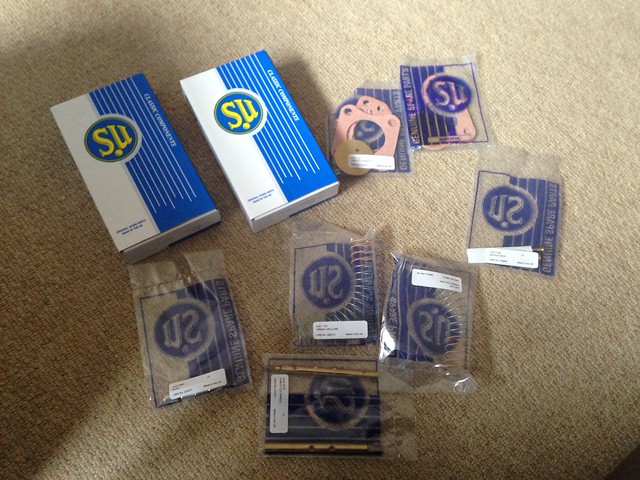
As I've mentioned in an earlier post I think my spindle bushes may need replacing so fortunatley the kit contains new ones. When I spoke to the chap at Burlen he did say that wear was more common in the spindle than the bush so I kept my fingers crossed and fitted a new spindle to each carb. The O/S was rock solid with no movement at all but the N/S one had an imperceptible wiggle. I think this backs up what the guy told me that wear varies from car to car depending on the throttle linkage set-up and becuse the throttle is directly connected to the N/S carb then across to the other one it makes sense that this has greater forces acting on the spindle. Actually as I type this I remember the N/S carb running leaner at times than the otherside and wouldn't stay in tune for long.
Basically tomorrow I'm taking the carbs up to a local engineering firm to have a look and give me a quote of rebushing them. The only thing I'm perturbed about is that when I slid a new bush over a new spindle it felt quite loose :? I would have expected it to be nice and snug. I hope I haven't been sent the wrong ones
On the subject of needles my rebuild kit arrived from Burlen today

As I've mentioned in an earlier post I think my spindle bushes may need replacing so fortunatley the kit contains new ones. When I spoke to the chap at Burlen he did say that wear was more common in the spindle than the bush so I kept my fingers crossed and fitted a new spindle to each carb. The O/S was rock solid with no movement at all but the N/S one had an imperceptible wiggle. I think this backs up what the guy told me that wear varies from car to car depending on the throttle linkage set-up and becuse the throttle is directly connected to the N/S carb then across to the other one it makes sense that this has greater forces acting on the spindle. Actually as I type this I remember the N/S carb running leaner at times than the otherside and wouldn't stay in tune for long.
Basically tomorrow I'm taking the carbs up to a local engineering firm to have a look and give me a quote of rebushing them. The only thing I'm perturbed about is that when I slid a new bush over a new spindle it felt quite loose :? I would have expected it to be nice and snug. I hope I haven't been sent the wrong ones
MikeP wrote,...
Hi Mike,
WinSu program recommends needles that are in the main excessivly rich from what I have seen, certainly nothing that a road going car would normally need. I tend to think that many people are using needles that are far too rich, hence the importance of having an air/fuel ratio test done. The WInSu programs recommends needles which at the top end are far too rich, when in fact the factory fitted BBG and BBV needles at that point are essentially right on the money. The low and mid range could be a touch richer, but not the top end.
I will explain a lot more over in the engine section on my post regarding air fuel ratios over the weekend.
Ron.
I find it very interesting how very similar engine setups require wildly different needles. I think at this stage I will go along with the Winsu recommendation and go from there as changing the needles over is very easy.
Hi Mike,
WinSu program recommends needles that are in the main excessivly rich from what I have seen, certainly nothing that a road going car would normally need. I tend to think that many people are using needles that are far too rich, hence the importance of having an air/fuel ratio test done. The WInSu programs recommends needles which at the top end are far too rich, when in fact the factory fitted BBG and BBV needles at that point are essentially right on the money. The low and mid range could be a touch richer, but not the top end.
I will explain a lot more over in the engine section on my post regarding air fuel ratios over the weekend.
Ron.
SydneyRoverP6B said:WinSu program recommends needles that are in the main excessivly rich from what I have seen, certainly nothing that a road going car would normally need. I tend to think that many people are using needles that are far too rich, hence the importance of having an air/fuel ratio test done. The WInSu programs recommends needles which at the top end are far too rich, when in fact the factory fitted BBG and BBV needles at that point are essentially right on the money. The low and mid range could be a touch richer, but not the top end.
Whilst easy to dismantle and put back together again, I did find that changing SU carburettor needles for a particular application a bit of an art to say the least :? The best I could get with my non-standard 'BCA' needles was a very responsive part throttle, and an over-fuelling leading to actual flooding on heavy throttle...not ideal. I've since learnt that one needs to change over to stiffer damper springs if using a richer needle.
After re-fitting the standard 'BAK' needles to my SUs, the car ran spot on again; and that was on a 3.9-litre
Mikep
Active Member
Last week I managed to get my carbs re-bushed and have the new butterflies and spindles fitted for me, so last night I reassembled the first carb. It all went back together easily so hopefully tonight I can start and finish the second one 

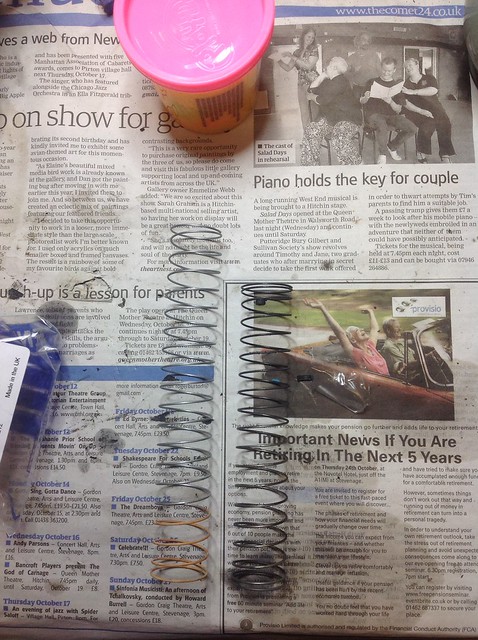
The old spring was quite a bit shorter than the new one :?
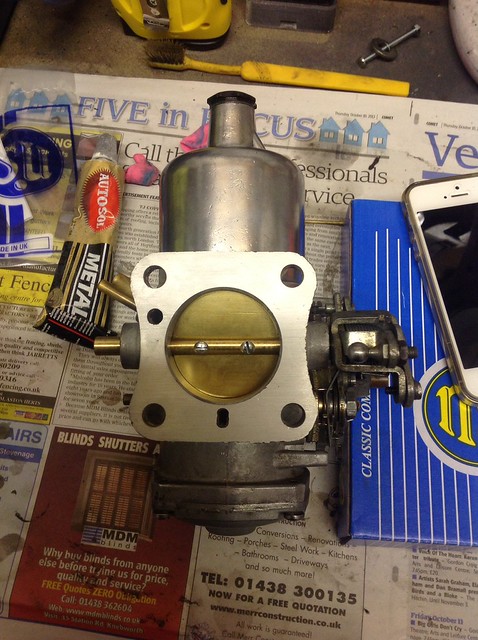
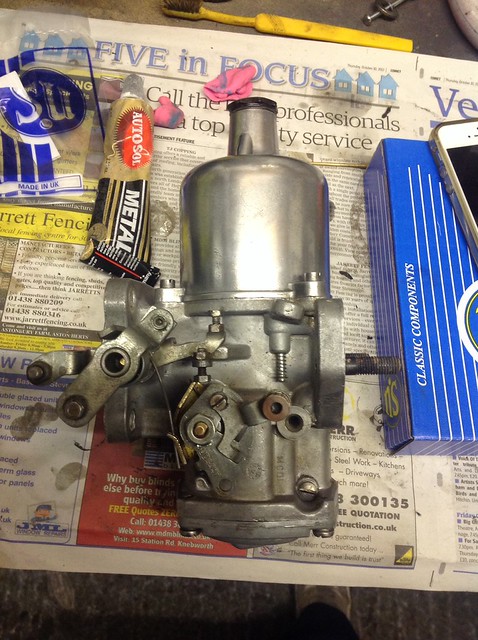
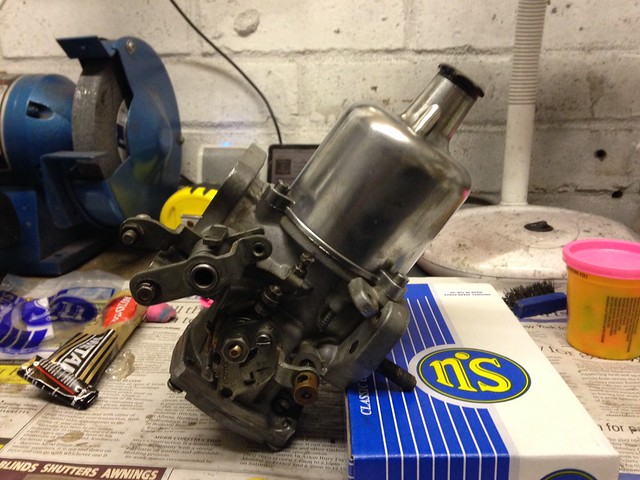
If you're wondering what the pink Playdoh is about I used it for blanking the air holes on the piston whillst doing the 'drop test'.
The only problem I encountered was that after I took the final picture I moved the piston up in the chamber but it wouldnt descend :shock: I took it apart and found that the piston was binding in the chamber. The cause was a small burr on the wall of the chamber. Not sure how that got there but was obviously there in the first place. The remedy was plenty of elbow grease and some various grades of wet and dry to remove the burr and scoring. Now the piston drops as it should
I also fitted the new BCA needle and I was quite surprised how much thinner it is than the BBV needle. I know its richer but you can physically see this. I hear what LeeEFI was saying so I will gives these a try but wont be too disapointed if I revert back to the BBV's.


The old spring was quite a bit shorter than the new one :?



If you're wondering what the pink Playdoh is about I used it for blanking the air holes on the piston whillst doing the 'drop test'.
The only problem I encountered was that after I took the final picture I moved the piston up in the chamber but it wouldnt descend :shock: I took it apart and found that the piston was binding in the chamber. The cause was a small burr on the wall of the chamber. Not sure how that got there but was obviously there in the first place. The remedy was plenty of elbow grease and some various grades of wet and dry to remove the burr and scoring. Now the piston drops as it should
I also fitted the new BCA needle and I was quite surprised how much thinner it is than the BBV needle. I know its richer but you can physically see this. I hear what LeeEFI was saying so I will gives these a try but wont be too disapointed if I revert back to the BBV's.
grifterkid
Member
That is carb-tastic...!!!
Mikep
Active Member
Work is progressing well. Finished the second carb last night and fitted them both to the manifold.
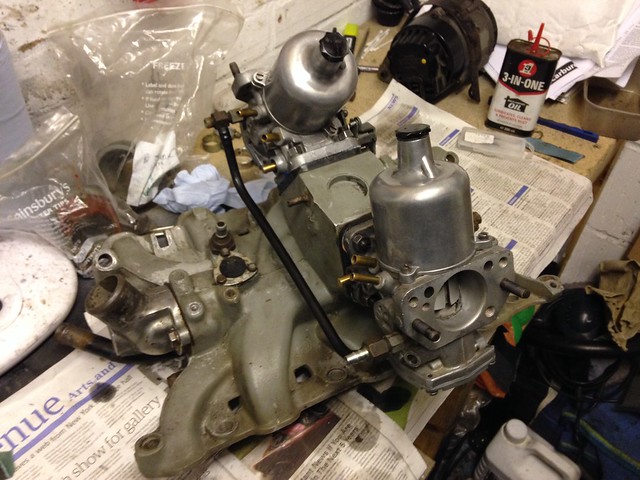
It was only once I had it all fitted did I step back and think 'why didn't I paint the manifold as it still looks dirty'. I will admit that I was inspired by Stina's inlet manifold.
I wasn't going to remove the carbs again so I thought I may as well bag them up,and spray the manifold with some high temperature paint. I'm really chuffed with the outcome
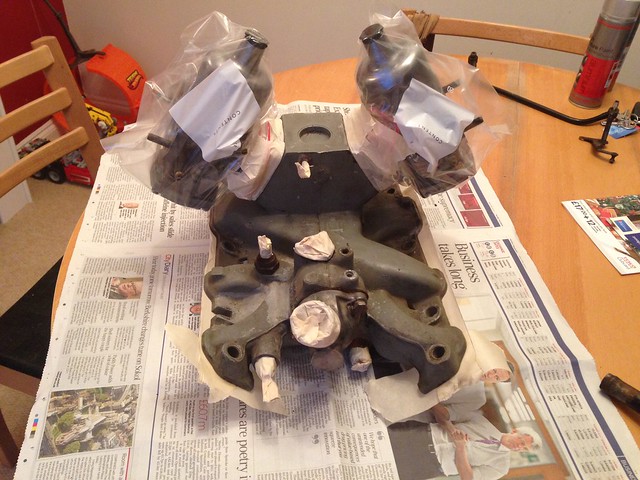
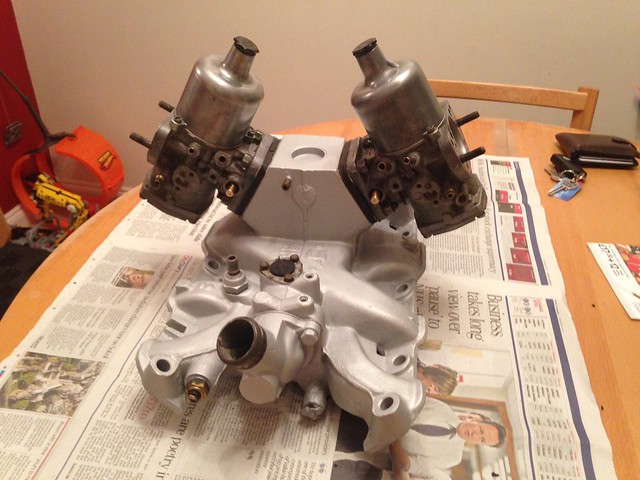

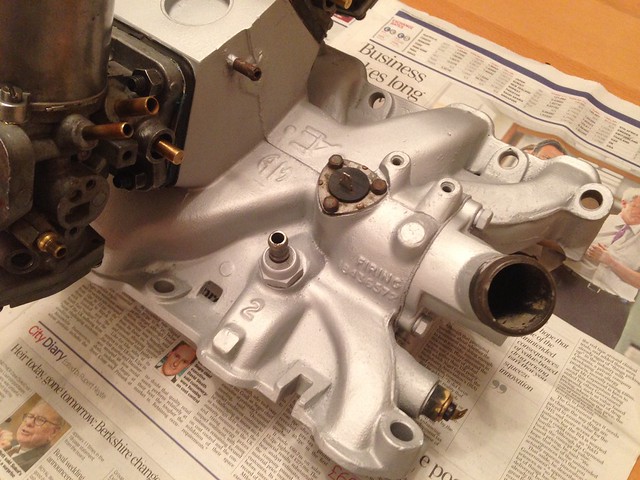

It was only once I had it all fitted did I step back and think 'why didn't I paint the manifold as it still looks dirty'. I will admit that I was inspired by Stina's inlet manifold.
I wasn't going to remove the carbs again so I thought I may as well bag them up,and spray the manifold with some high temperature paint. I'm really chuffed with the outcome




mrtask
Well-Known Member
Why not touch in the cylinder numbering and firing order with an accent colour, perhaps even in red, before you refit the intake manifold and carbs?
Time to spiff up the accelerator linkage and the air filter cannister and elbows to match?
Looking good already. Hopefully it'll go well too...
Time to spiff up the accelerator linkage and the air filter cannister and elbows to match?
Looking good already. Hopefully it'll go well too...
Mikep
Active Member
chrisyork said:Mmm. That's tasty. They are meant to be grey though, Mike...
Well done with the carbs, acid test to come quite soon by the look.
Chris
Thanks Chris, they are an improvement. I was in two minds initially about leaving them and doing it at a later date in the correct colour, or as close as possible, but it would have meant degreasing and spraying them while they're on the car. I really want to get them on this weekend and have the car running next week.
grifterkid
Member
That looks superb. What paint did you use?!
Mikep
Active Member
grifterkid said:That looks superb. What paint did you use?!
Thanks
corazon said:I like it Mike, looks like clean blasted raw aluminium, but will actually stay looking that way
I think the Buick engine might have had this look on it's original manifold
Jim
It better stay this way
There was a time when you could buy the proper Rover grey. I purchased an aerosol tin from a business long gone called Roverline back in the late 1980's.
Looking good MIke.
Ron.
Looking good MIke.
Ron.
unstable load
Well-Known Member
Try here for a possible match....SydneyRoverP6B said:There was a time when you could buy the proper Rover grey.
http://cdb.shcolor.info/AdvancedSearch. ... essGroup=0

